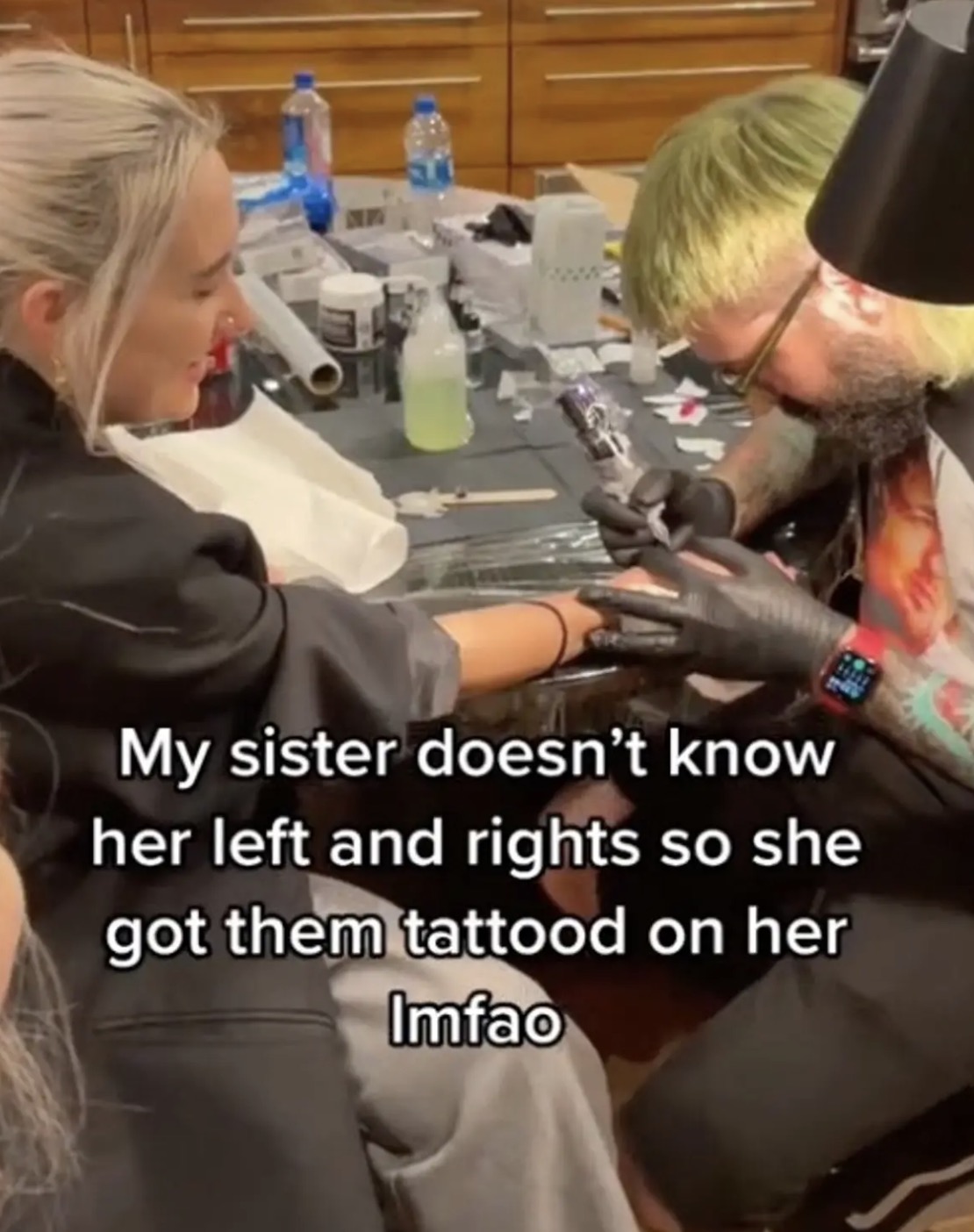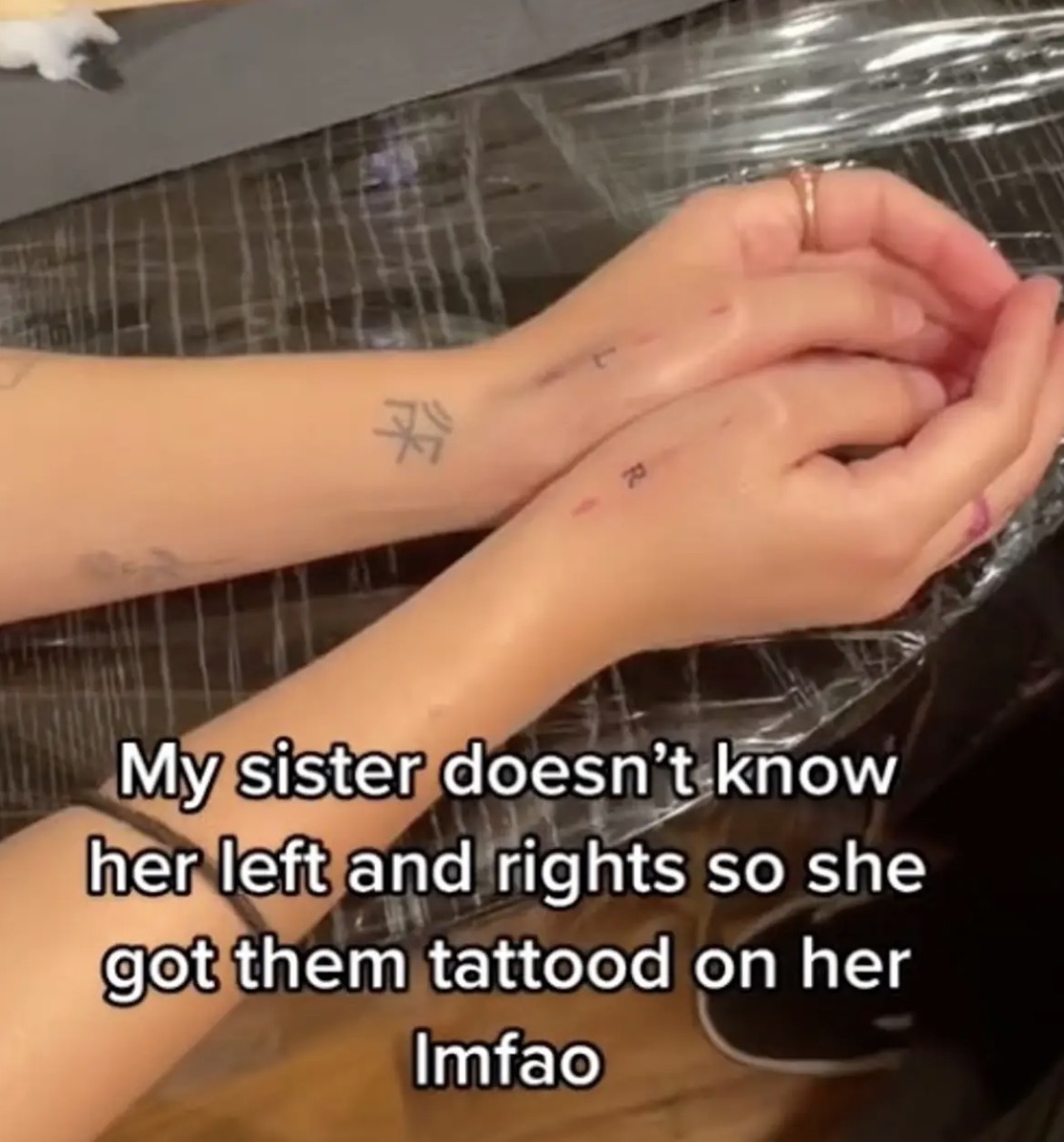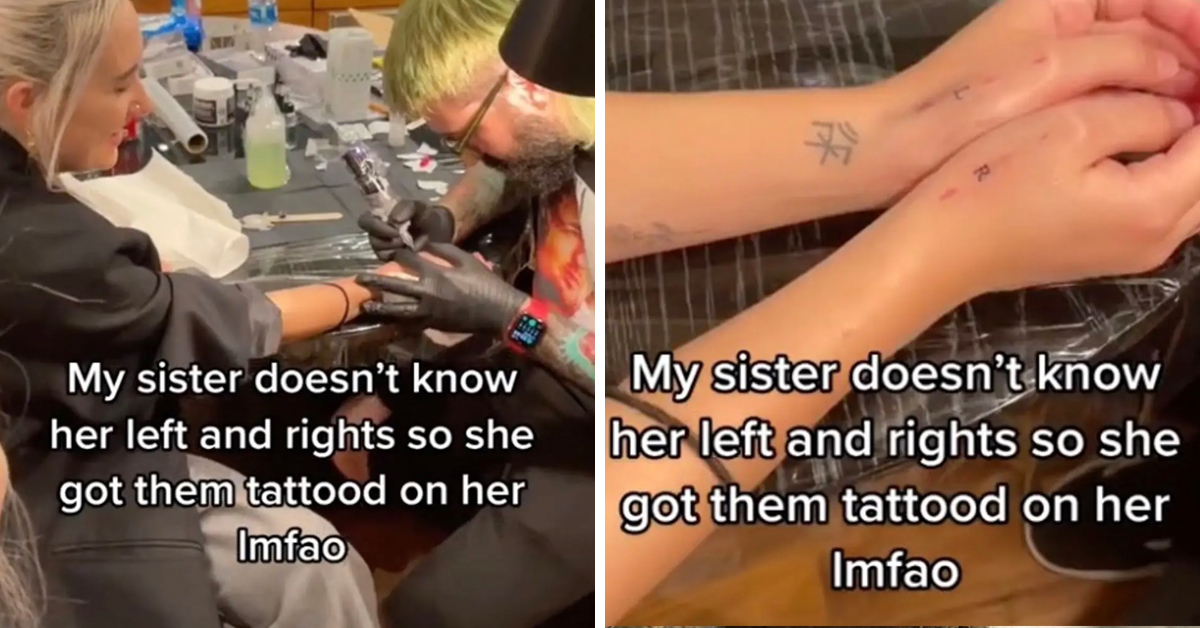I struggle to understand who has trouble with remembering their right from their left hand after, I don’t know, 1st grade, but apparently there are people like this and their solution seems to be “tattoo them to my skin”.
A viral TikTok shows a woman’s sister getting her hands tattooed with “L” and “R” so she can remember her left and right hands. The video has 7 million views and TikTokers are going nuts for the whole thing.
Eliza, who uploaded the clip, wrote, “My sister doesn’t know her left and rights so she got them tattooed on her lmfao.”

The sister receives an L and an R tattooed on each hand below her thumb.
People were enormously confused by the entire thing.
One person wrote, “I WOULD DO THIS THEN ACCIDENTALLY GET THEM TATTOOED ON THE WRONG SIDES.”
“I think I would question myself three times a day if I got the tattoos on the right hands,” said a second.
“I think I’m the only one left on earth to know left and right without thinking,” a third person wrote in.
Another person joked: “Bro when someone says ‘ok which way again?’ I panic.”

“So just making the ‘L’ shape with your thumb and index finger of your left hand isn’t easy enough?” wondered one genius.
“I used to struggle too until I broke my left arm now I have a massive scar to help me know my lefts and rights,” another added.
Surprisingly, there has actually been research on the issue of not being able to tell your left and right hands. Gerard Gormley, Senior Academic General Practitioner at the School of Medicine, Dentistry and Biomedical Sciences, Queen’s University Belfast, explained to The Independent:
In research we published in Medical Education, we explored the impact of such interruptions on medical students’ ability to correctly discriminate right from left.
While objectively measuring 234 medical students’ ability to distinguish right from left, we subjected them to the typical ambient noise of a ward environment and interrupted them with clinical questions.
“Our findings were startling. Even the background noise of a ward environment was enough to throw some medical students off when making right-left judgements.
“Asking them a series of questions while they were trying to distinguish right from left had an even greater impact. The ‘distraction effect’ was greater for older and female students.
“An individual’s ability to self-determine how well they could distinguish right from left was also often imprecise.
“So many students thought they were good at distinguishing right from left when, objectively measured, they weren’t.”

